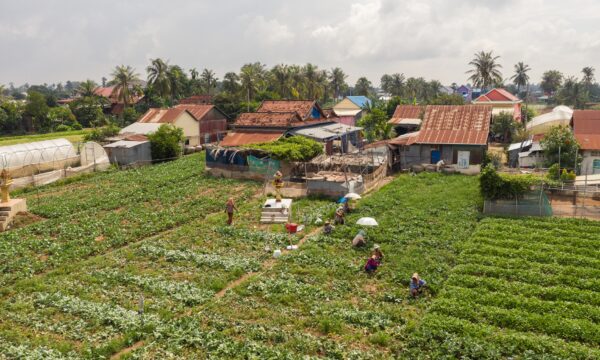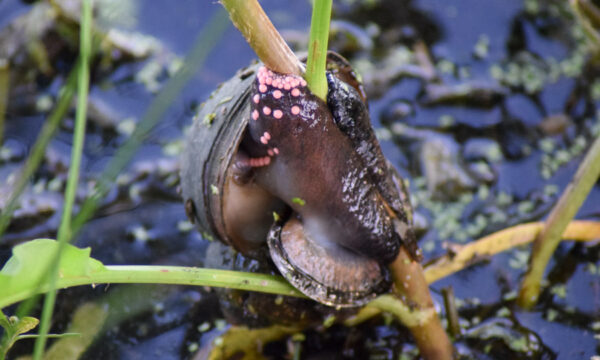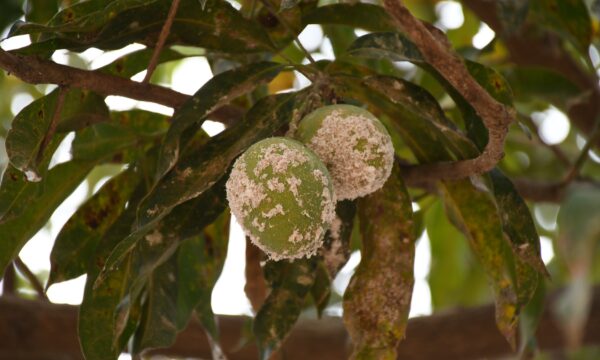Invasive species are a growing threat to sustainable agriculture worldwide. When they are introduced into a region, they can spread rapidly, damage crops, disrupt ecosystems, affect native biodiversity, and result in significant economic losses. Understanding how invasive species are introduced to new areas is crucial in preventing their spread and protecting global food systems.
What is an invasive species?
An invasive species is an organism that is not native to a particular ecosystem and whose introduction causes, or is likely to cause, harm to the environment, the economy, or human and animal health. In agriculture, invasive species are often non-native plants, pathogens, or insects that negatively impact crop production.
These species spread rapidly due to a lack of natural enemies that would regulate them, and farmers often do not know how to control them.
What are some invasive species?
Several invasive species have had significant impacts on crop health and yield. Some key examples include:
- Phthorimaea (Tuta absoluta) (tomato leaf miner): Native to South America, this moth has become a serious pest in Africa, Europe, and Asia, devastating tomato crops by burrowing into leaves, stems, and fruit.
- Khapra beetle (Trogoderma granarium): One of the world’s most destructive pest of stored grain. It’s highly resistant to insecticides and thrives in dry climates, posing a threat to global food security.
- Parthenium hysterophorus (parthenium weed): Originally from the Americas, this invasive weed spreads rapidly and suppresses crop growth by releasing chemicals into the soil.
- Oriental fruit fly (Batrocera dorsalis): From Asia originally, this fly has spread to Africa, America and Oceania, and poses a significant threat to fruit crops.
- Fall armyworm (Spodoptera frugiperda): Native to the Americas, this species has invaded Africa and Asia, which have ideal climatic conditions for it to produce several generations in a season.
- Phytophthora blight (Phytophthora infestans): Populations of this microorganism, common in Mexico, spread to Europe, Asia, and North America, most frequently affecting potatoes and tomatoes.
- Pierce’s disease of grapevines (Xylella fastidiosa): This bacterium spread from the Americas to Europe and Asia. It causes disease in major crops including citrus, olives, coffee, and grapevines.
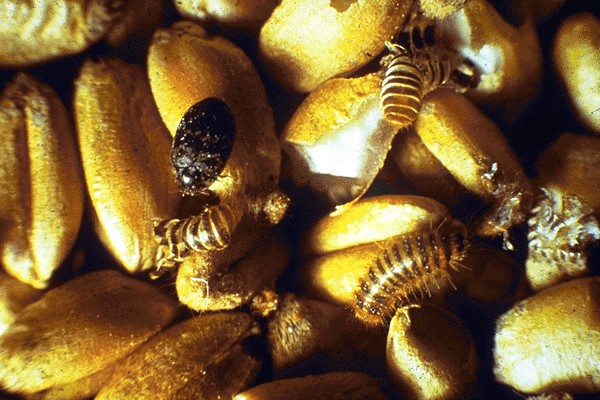
Ministry of Agriculture
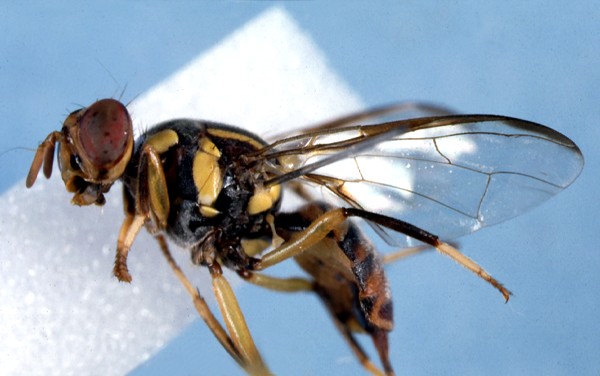
©CABI BioScience
Why are invasive species dangerous?
Invasive species can wreak havoc on local ecosystems. They may:
- Cause significant yield losses in essential food crops.
- Damage livelihoods, endanger food security, and disrupt social stability.
- Displace native species and reduce biodiversity.
- Result in an increased use of pesticides and other methods, and labour to control them.
- Impact human health by causing allergies or from heavy pesticide use.
The damage from invasive species is often swift and severe. For example, the fall armyworm has invaded over 80 countries in under 10 years. Each year, invasives cause at least $423 billion to be lost globally.
How are invasive species introduced?
They can be introduced through several pathways, the most common of which include:
- International trade and travel: Insects, seeds, and plant pathogens can hitchhike on imported goods, produce, planting materials, and packaging materials.
- Contaminated agricultural equipment: Machinery moved between farms and regions can carry soil, seeds, pathogens or larvae.
- Livestock movement: Animals can carry invasive weed seeds in their fur or digestive systems, spreading them across long distances.
- Waterways and irrigation systems: As in the case of the apple snail in Kenya, aquatic invasive species can spread via canals and rivers.
- Deliberate introduction for ornamental or agricultural use: Some invasive species were introduced for their aesthetic or presumed agricultural or environmental value, only to become problematic later.
How to stop invasive species?
Preventing the introduction of invasive species is more effective and less costly than trying to control them after the fact. Prevention and control occurs in multiple steps:
- Quarantine and inspection: Strict controls on imported goods and plant materials can reduce accidental introductions.
- Horizon scanning: Understanding which pests are likely to come, survive, multiply, and cause damage.
- Preparedness: Knowing how to respond if an invasive species is introduced and having sound methods of quick detection.
- Eradication: If it arrives, taking measures to remove and destroy it.
- Containment: If it isn’t eradicated, slowing its spread.
If they become a problem pest on crops, use:
- Integrated Pest Management (IPM): closely monitoring pest populations and combining biological control with mechanical and physical control methods as well as resistant crop varieties can reduce the reliance on chemical pesticides.
- Biocontrol agents: Carefully selected natural enemies can be introduced or multiplied to control invasive pests, as seen in Kenya’s response to the papaya mealybug.
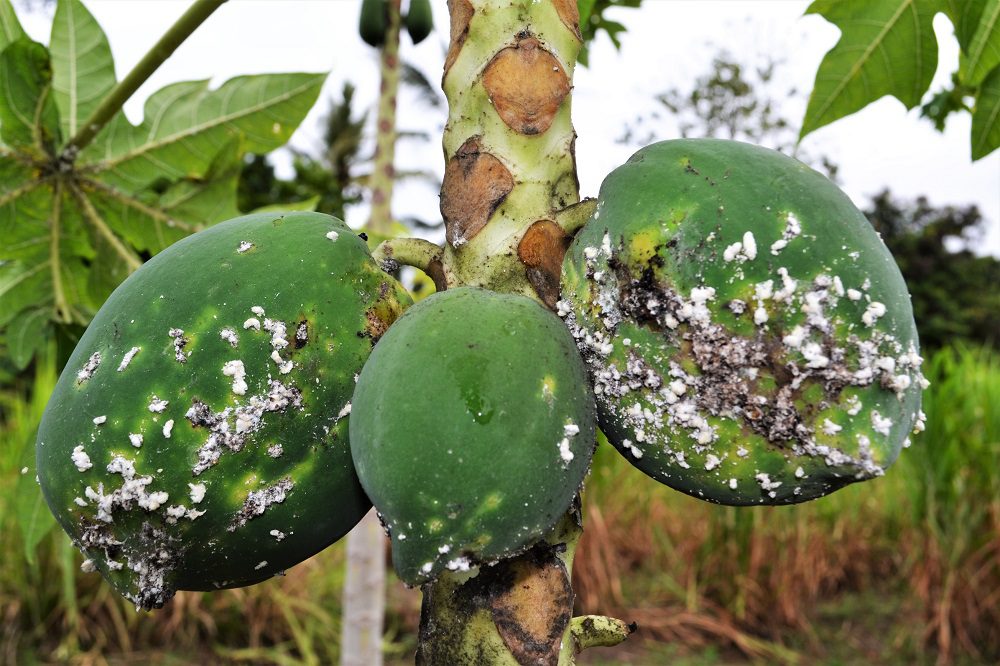
In summary
The introduction of invasive species is a serious but preventable threat. Two international efforts exist to mitigate the impacts of invasive species on biodiversity and plant health: the Convention on Biological Diversity and the International Plant Protection Convention.
With careful monitoring, international cooperation, and the adoption of sustainable farming practices, it’s possible to reduce their spread and protect both biodiversity and food security.
Related News & Blogs
In pictures: Tackling Croton scale in Grenada
In Grenada’s lush tropical landscapes, a tiny pest, the Croton scale, is having a massive impact. But thanks to the power of nature and knowledge sharing, change is underway. Through the combined efforts of the Ministry of Agriculture, CABI PlantwisePl…
29 July 2025

